Speed 2: Cruise Control
3.8 /10 1 Votes
Budget 110 million USD Duration Language English | 3.8/10 IMDb Genre Action, Crime, Romance Initial DVD release March 9, 1999 Country United States | |||||||||||||||||||||||||||||||||
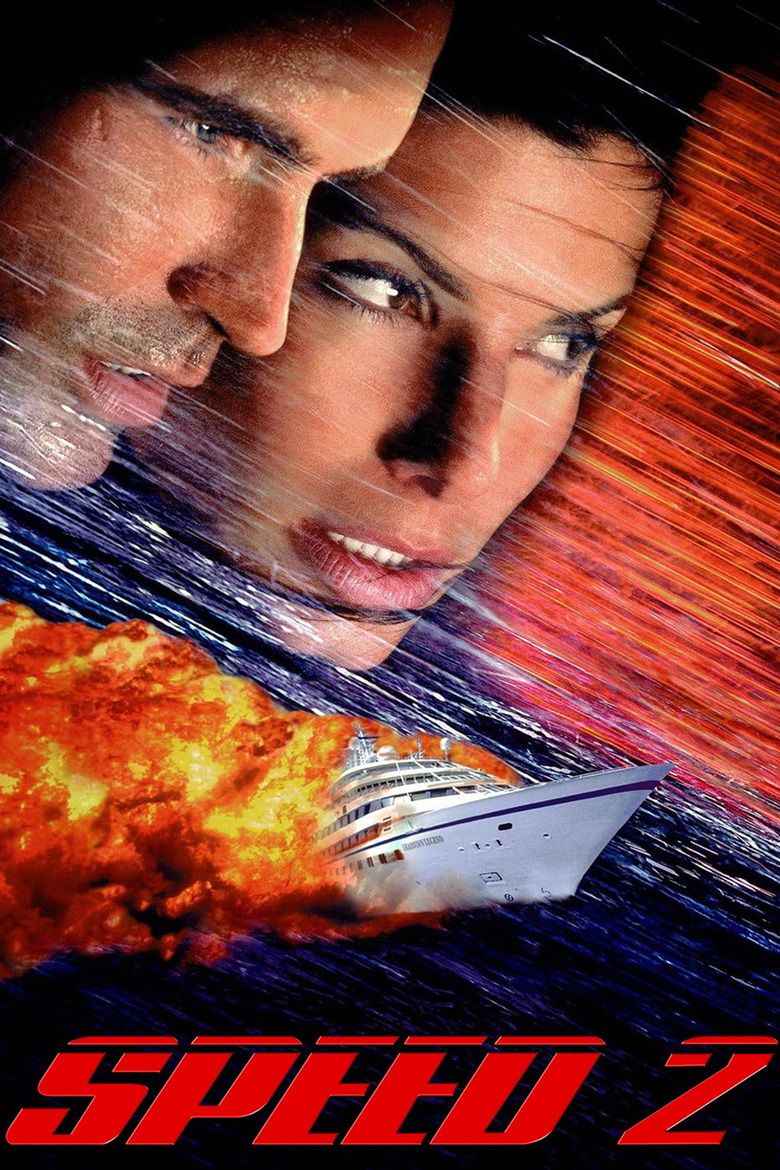 | ||||||||||||||||||||||||||||||||||
Release date June 13, 1997 (1997-06-13) Writer Graham Yost (characters), Jan de Bont (story), Randall McCormick (story), Randall McCormick (screenplay), Jeff Nathanson (screenplay) Cast (Annie Porter), (Alex Shaw), (John Geiger), (Juliano), (Drew), Mike Hagerty (Harvey)Similar movies San Andreas , Jurassic World , Blackhat , Spy , Independence Day , The Hobbit: An Unexpected Journey Tagline As the stakes get higher, the ride gets even faster. | ||||||||||||||||||||||||||||||||||
Speed 2 cruise control 1997 theatrical trailer
Speed 2: Cruise Control is a 1997 American disaster thriller film, and a sequel to Speed (1994). It was produced and directed by Jan de Bont, and written by Randall McCormick and Jeff Nathanson, based on a story by De Bont and McCormick. Sandra Bullock stars in the film, reprising her role from Speed, while Jason Patric and Willem Dafoe co-star. The film was released by 20th Century Fox on June 13, 1997.
Contents
- Speed 2 cruise control 1997 theatrical trailer
- Speed 2 cruise control movie review jpmn
- Plot
- Background and writing
- Casting
- Filming
- Score
- Soundtrack
- Reception
- Release and box office
- Razzie Awards
- Legacy
- References
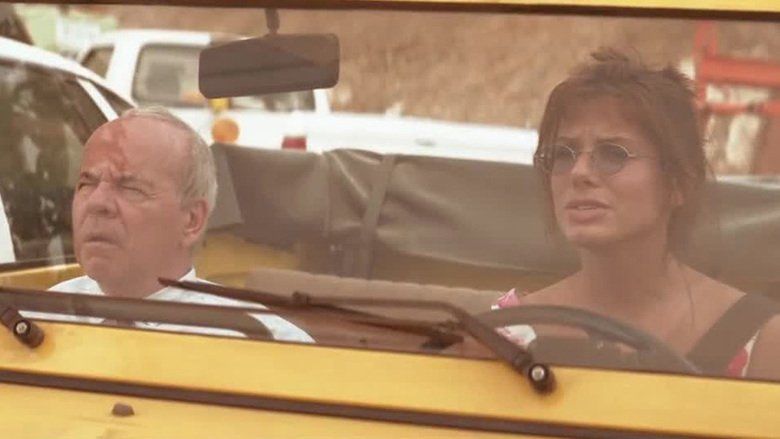
The plot involves a couple, Annie and Alex, vacationing in the Caribbean aboard a luxury cruise ship, which is hijacked by a villain named Geiger. As they are trapped aboard the ship, Annie and Alex work with the ship's first officer to try to stop it after they discover it is programmed to crash into an oil tanker.
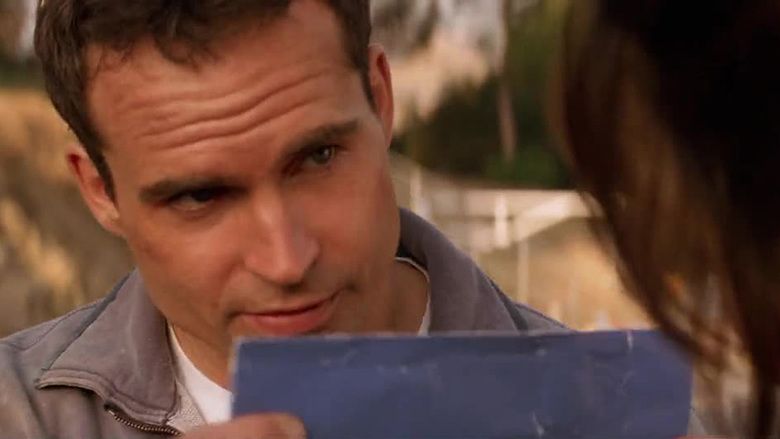
De Bont came up with the idea for the film after he had a recurring nightmare about a cruise ship crashing into an island. Speed star Keanu Reeves was initially supposed to reprise his role as Jack Traven for the sequel, but decided not to commit and was replaced by Patric prior to filming. Production took place aboard Seabourn Legend, the ship on which the film is set. The film's final scene, when the ship crashes into the island of Saint Martin, cost almost a quarter of the film's budget, and set records as the largest and most expensive stunt ever filmed. Many interior scenes aboard the ship were shot on soundstages in the Greater Los Angeles Area. The film's soundtrack featured mostly reggae music. Mark Mancina returned to compose the film score, which was released as an album 13 years after the film's release.
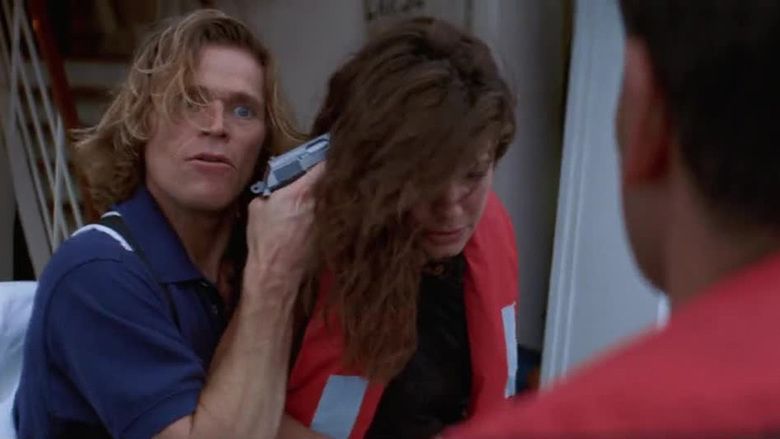
Critical reception of the film was extremely negative. The acting, story, and characters attracted the most criticism as well as the film's setting on a slow-moving cruise ship, which was much less thrilling than Speed's setting on a fast-moving bus. The film was also a financial disappointment, earning $164 million worldwide against a budget of $110 million. It was nominated for eight Golden Raspberry Awards, and won the award for Worst Re-Make or Sequel.

Speed 2 cruise control movie review jpmn
Plot

Alex Shaw is on a motorcycle chasing a vehicle with stolen goods. After he catches the driver of the vehicle, his girlfriend Annie runs into him during her driving test. She finds out that Alex is on the SWAT team after he lied and told her he was a beach officer. As an apology, Alex surprises her with a Caribbean cruise on Seabourn Legend.
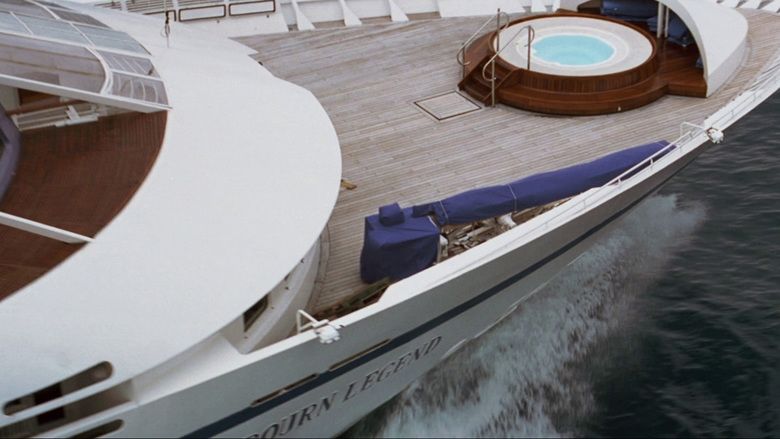
Aboard the ship, passenger John Geiger hacks into the ship's computer system, and the following evening, he destroys the ship's communication systems and kills the captain. After remotely shutting down the ship's engines, Geiger calls the bridge to tell the first officer, Juliano, that the captain is dead and he is in charge. Juliano is ordered by Geiger to evacuate the ship. Geiger steals jewelry from the ship's vault. As passengers evacuate, Drew, a young deaf girl, becomes trapped in an elevator, and a group of people become trapped behind locked fire doors in a hallway filling with smoke. As Annie and Alex attempt to board the last lifeboat, Geiger programs the ship to continue sailing. The winch lowering the lifeboat jams. Alex jumps into the boat to rescue the passengers who are falling off, and Annie and Juliano use the ship's gangplank to get them back on deck.
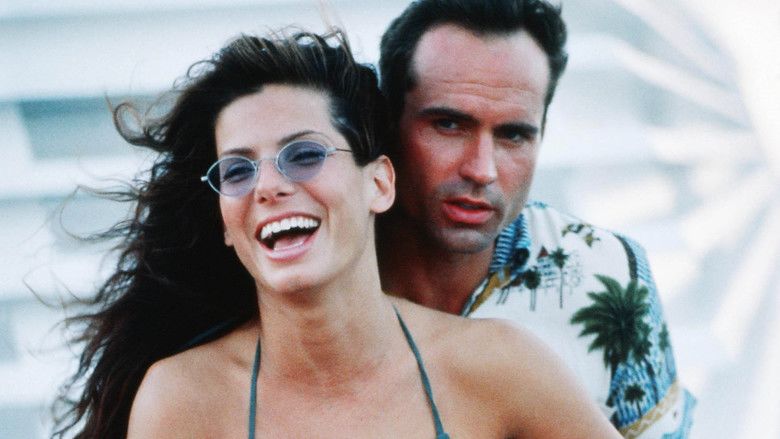
Alex realizes Geiger is controlling the ship. Armed with skeet guns, he goes with Juliano to Geiger's cabin. Geiger remotely detonates explosives inside the room. Annie and Dante, the ship's photographer, notice the people trapped behind the fire doors, and Annie uses a chainsaw to cut the door open and let them out. Meanwhile, Alex orders the navigator, Merced, to flood the ship and slow it down by opening the ballast doors. As the ship floods, Alex sees Drew on a monitor after she climbs out of the elevator, and runs to save her. Alex notices Geiger leaving the vault and holds him at gunpoint, but he escapes by closing the fire door in front of him. Using the ship's intercom, Geiger explains that he designed the ship's autopilot system and is taking revenge against the cruise line after being fired when he got sick from copper poisoning. Geiger again escapes from Alex by attaching a grenade to a door.

The crew notice that Geiger has set the ship to crash into an oil tanker off the coast of Saint Martin. Alex decides to stop the ship by diving underneath it and jamming the propeller with a steel cable. Geiger realizes Alex is trying to stop the ship, so he jams the cable winch while Alex is underwater, causing it to break off the ship and free the cable. Geiger takes Annie hostage and escapes with her on a boat from the ship's stern.
To avoid collision with the oil tanker, Alex and Dante go into the ship's bilge and use the bow thrusters to turn it. The ship screeches down the side of the tanker, but manages to withstand the damage, and heads straight into a marina. It then crashes into a Saint Martin town and eventually stops. Alex jumps off to rescue Annie and hijacks a speed boat. Geiger takes Annie into a seaplane. Alex shoots at it from the boat with a speargun and reels himself in through the water. He climbs onto the plane and rescues Annie, and both escape from the plane on one of its floats, which falls onto the ocean. Geiger loses control of the plane and crashes into the oil tanker, causing it to explode. The tanker crew however are safe, having launched their lifeboat just in time. Annie and Alex travel back to shore in the speed boat, and he gives her an engagement ring, asking her if she will "wear it for a while", and she accepts.
Background and writing
Speed was released in June 1994, starring Keanu Reeves and Sandra Bullock. The film's plot features story of a runaway bus armed with a bomb that will explode if its speed drops below 50 miles per hour (80 km/h). It was a box office success, grossing almost $350 million worldwide, and holds a 93% "fresh" rating at review aggregator website Rotten Tomatoes based on 60 critics' reviews. Director Jan de Bont felt the film was a "one-time story" with no sequel potential, and its studio, 20th Century Fox, included no obligation for the actors to appear in a follow-up film in their contracts. However, due to positive word of mouth prior to its release, Fox considered producing a Speed sequel, and officially announced plans after the film's initial box office success in the first week of its release. De Bont was contractually obligated to direct it, and was paid a reported $5–6 million salary. Even though their contracts did not obligate them to do so, Fox expected Reeves and Bullock to reprise their roles, and envisioned the follow-up film with Reeves and Bullock's characters as a married couple.
Hundreds of ideas for a sequel were submitted to De Bont, all of which he turned down in favor of his own idea, based on a recurring nightmare he experienced about a cruise ship crashing into an island. Speed screenwriter Graham Yost had an idea for a film involving a boat, with a Vietnam War-era vessel loaded with weapons that would explode if its ammunition came in contact with water. He also had an idea for a story about a plane that has to fly through the Andes mountains, but cannot ascend above 10,000 feet (3,000 m). Neither Yost nor Speed producer Mark Gordon were asked to participate in the sequel, although Yost received a "characters created by" credit and Gordon was credited as executive producer for Speed 2. Randall McCormick was hired to write the sequel in 1994 and received a story credit along with De Bont. McCormick and Jeff Nathanson collectively wrote the screenplay, working back from the idea based on De Bont's nightmare. Prior to production, details about the film were kept secret, and De Bont refused to confirm rumors about the film taking place on a ship, although he did state that the sequel would be "funnier", while Speed 2 star Jason Patric said the sequel is a "very complex movie" and would have "bigger sequences".
Speed 2 was produced by De Bont's production company, Blue Tulip, and he was one the film's three co-producers along with Steve Perry and Michaer Peyser. While Speed was produced for $30 million, the sequel was green-lit at "just under $100 million" due to the larger production and higher cast salaries. The director began working on pre-production prior to the release of his previous film, Twister (1996). He started location scouting in the Caribbean in May 1996, and chose Saint Martin as the primary filming location because he felt it was least likely to be subjected to a hurricane. For the cruise ship on which the film would be set, De Bont visited ships from various cruise lines and ultimately chose Seabourn Legend for its luxurious amenities and sleek design.
Casting
Bullock initially declined to star in the sequel, but later agreed to get financial backing for the drama film Hope Floats (1998); she was paid a reported $11–$13 million to reprise her role as Annie. Reeves was offered $12 million to reprise his role as Jack Traven, but turned it down because he did not like the script, was financially secure from the success of Speed, and felt he was not "ready to mentally and physically" star in another action film after having completed Chain Reaction (1996). He passed on the role to star in the horror film The Devil's Advocate (1997), which was filmed at the same time as Speed 2, and subsequently toured with his band, Dogstar. Reeves said that Fox was "furious" with his decision and released "propaganda" against him, falsely claiming that he turned down the role to tour with his band. De Bont said that the character in the sequel was not specific to Reeves and could be played by any young actor, as long as he had chemistry with Bullock.
Many actors were considered to replace Reeves including: Simon Baker Denny, Jon Bon Jovi, Patrick Muldoon, Johnathon Schaech, Christian Slater, and Billy Zane. Bullock initially suggested Matthew McConaughey, who passed on the role, prompting her to suggest Jason Patric, with whom she had wanted to work since seeing his performance in After Dark, My Sweet (1990). De Bont was skeptical of featuring a relatively unknown actor such as Patric, but was reminded by the studio that Bullock and Reeves were also relatively unknown prior to Speed, and ultimately chose Patric based on his role in Sleepers (1996). Patric was paid a reported $4.5–$8 million for his role in Speed 2 and used his salary to finance a 1998 drama, Your Friends & Neighbors. After accepting the role, Patric stated that he never saw Speed or had any intentions of seeing it; Reeves said he was looking forward to seeing Patric star in the sequel. After Reeves declined to appear in Speed 2, the screenplay was rewritten to remove his character from the story, which De Bont wanted to deal with early in the film. His absence is explained in the first scene, where Annie talks about how her relationship with Jack did not work out, and mentions her current relationship with Alex (Patric), before his character is introduced in the film.
Gary Oldman turned down the role of the villain, Geiger, to star as another villain in Air Force One (1997). Willem Dafoe was cast as Geiger after he wanted to star in a "big movie" and once again play a villain. De Bont cast New Zealand actor Temuera Morrison as Juliano based on his role in Once Were Warriors (1994). Although he did not like the script, Brian McCardie accepted the role as Merced as his agents assured him it would be good for his career.
Comedian Royale Watkins was hired by De Bont for the part of Dante after discovering Watkins performing at a comedy club. Glenn Plummer was cast as a character named Maurice whose boat is hijacked by Alex, reprising his role from Speed as a Jaguar owner whose car is hijacked by Jack. To add comic relief, De Bont cast comedian Tim Conway as Annie's driving instructor, and hoped it would be a comeback role for him. Singer Tamia was cast as Sheri, an entertainer on the ship, because De Bont wanted a singer who could also act. She did not plan on doing any film acting that early in her career, as she had yet to release her debut album, but said the part was "too perfect for [her] to resist." Joe Morton reprised his role from Speed as SWAT lieutenant "Mac" in an uncredited cameo appearance in the beginning of the film.
Filming
Principal photography took place from September 23, 1996, to late February 1997. Film crews moved to West Palm Beach and Miami, Florida in July 1996 anticipating shooting in each location for several weeks later that year. However, due to scheduling issues with Patric, production did not take place in West Palm Beach and there were "just a few days" filming in Miami. The Miami production took place in a gymnasium and boat hangar at the Dinner Key marina complex, rented by Fox. After spending over $55,000 on repairs to the facilities, Fox refused to pay the $35,000 in rental fees to the City of Miami. The city sued for the rent since Fox did not seek approval for the repairs, and a compromise was reached when the city credited some repair costs, resulting in Fox paying around $26,000 rent.
Seabourn Legend was rented for six weeks at a reported cost of $38,000 per day; the ship served as the film's primary setting and provided accommodation for the cast and crew. The evacuation sequence was among the first scenes filmed on the ship, and was shot in Key West, Florida over a two-week period. Approximately 30 hoses and the ship's fire sprinkler system were used to simulate heavy rainfall in the scene. Severe weather conditions from Hurricane Lili delayed production activity on the ship for several days, and caused seasickness among the cast and crew for the remainder of the production at sea. To make the ship appear faster, all exterior shots were filmed from a moving vehicle. Scenes on the bridge were filmed in a mockup dubbed the "bridge ship", a large-scale reconstruction of the bow and bridge built atop the hull of a cargo ship. Additional ship interiors were filmed at Sony Pictures Studios and Warren Entertainment in Los Angeles County, California. Full-scale replicas of the ship's atrium, cabins, and engine rooms were constructed on sound stages where production took place for over a month. The scene where Alex rescues Drew while the ship is being flooded was filmed by camera operators wearing wet suits inside a sound stage tank, which was constructed with plywood and a hydraulic lift to give the effect that the water level was rising.
For the climatic scene when the ship crashes into an island, De Bont wanted to create and destroy an actual town. He opted against miniature scale models or computer-generated imagery (CGI) to provide a sense of realism for the actors and the audience. A $5 million, 35-building set was constructed in Marigot, Saint Martin based on the town's local architecture, which temporarily housed production offices. Despite De Bont's reason for choosing Saint Martin for filming, a hurricane struck the town and destroyed the set during construction. It had to be rebuilt with hurricane-proof buildings. Exteriors of the bow mockup on the bridge ship were used in the first part of the scene when the Seabourn Legend is crashing into sailboats in the harbor; the bridge ship was used in place of the actual Seabourn Legend, as the latter could not navigate the harbor's shallow waters. The captain of the bridge ship had great difficulty hitting the sailboats during filming, despite cameras placed on the boats for the captain to view. A second mockup was constructed for the latter part of the scene, which featured a 150-foot (46 m) long replica of the Seabourn Legend's bow. This mockup, referred to as the "rail ship", weighed 300 short tons (270 t), and sat atop a set of wheels along a 1,000-foot long (300 m) track built 60 feet (18 m) underwater.
Filming the final scene with the rail ship was initially delayed because it could not be hoisted onto the track because of large waves caused by the hurricane. The scene was filmed using 14 cameras, with the rail ship traveling 50 feet (15 m) at a time into the set, with debris from the destruction cleared between each take. The mockup was powered by four diesel engines and pulled by a large chain at a speed of 18 miles per hour (29 km/h). The scene's three planned collisions were aided by explosives and hydraulics to ensure the set's structures collapsed precisely. Concrete was also removed from the buildings and replaced with sand-coated balsa wood so the buildings would "crumble" more effectively after being hit by the rail ship. In the scene's final shot, it had to stop successfully within a 6-inch (15 cm) area on the first take. The five-minute scene cost $25 million to produce, roughly one quarter of the film's entire budget, and set records as both the largest and the most expensive stunt ever filmed.
The underwater scene where Alex swims underneath the ship was filmed in the Tongue of the Ocean off the coast of New Providence in the Bahamas. The location was chosen due to its water clarity, however, after viewing dailies of the scene, De Bont felt the water was too clear, so it was reshot with divers above the camera dusting the area in front of the lens with sediment to alter the clarity of the footage. The scene was filmed underneath a propeller-less barge that was designed to resemble the Seabourn Legend. To provide a sense of velocity in the scene, the barge was towed by tugboats at one and a half knots. The production crew did not have a winch system available for the underwater shoot as depicted in the scene, so a pulley system was created by feeding Patric a rope that was attached to the axle of a car that drove along the barge.
Instead of using stunt doubles, De Bont persuaded Bullock, Patric, and Dafoe to perform their own stunts, so the scenes would appear more realistic; the lead actors were required to engage in physical exercise sessions before and during filming. Stunt coordinator Dick Ziker was very impressed with Patric's stuntwork, and said that he "is so physical he probably could be one of the top stunt men in the world". His stunts included being dragged by a seaplane through the water, jumping onto collapsing buildings, and scuba diving while pulled by a moving ship. He was also required to tread water for multiple hours at a time. During a motorcycle stunt on a Ducati 916 on the second day of filming, Patric flew off the bike 30 feet (9 m) into the air and landed on a small bush; Bullock said the incident was so serious that Patric "should be dead". After surviving a traumatic surfing incident as a teenager, Bullock had to overcome her fear of water to perform necessary stuntwork in the film. During production at sea, Bullock was smacked into the ship on multiple occasions, and was saved by Patric from decapitation by the ship's rudder in one scene. Bullock and Patric also had a scene filmed in an underwater tank where they had to kiss underwater with Bullock's hands tied together. Navy SEALs with scuba gear were present inside the tank during shooting, as the actors had to hold their breath during the scene. According to Bullock, she performed all of her own stuntwork "except for a quarter of one stunt"; her stunt double worked for only three days during production. Of all the stunt-related incidents during production, De Bont said the most frightening was when a stunt woman was hit in the face by a boat cable and required reconstructive surgery. Following the production at sea, De Bont said that filming on water "was 100 percent more difficult than [he] imagined".
Score
Composer Mark Mancina wrote the film score for Speed 2 having previously composed the scores for Speed and Twister. He started composing the music in March 1997 and it was recorded at the end of April. He began by creating themes and melodies, then worked them into the film where he felt they would fit. The score includes a reworking of the 20th Century Fox fanfare, in which the final chord is sustained and "slithers down" into the opening theme, while the studio logo fades into a traveling shot of the ocean on screen. Fox was initially hesitant to feature an altered version of their fanfare, but allowed the alteration after being convinced by De Bont and hearing it performed by an orchestra.
Specific action cues were scored on the piano down to each second of film. Noting how the film was set in the Caribbean and had a different, slower pace than Speed, Mancina gave the score a "Jamaican/Latin feel" by incorporating reggae music between action sequences. The reggae music was written to give the feel of being on vacation and serve as a love theme for the characters. Some themes from Speed were included in the score between sections of the newly written material. He wrote new themes for Annie and Alex because he felt the original themes written for Reeves' character would not work well with Patric. After viewing the scene where Geiger attaches leeches to his body to cleanse his blood, Mancina felt the scene was "so gross" that he wrote a "slimy theme" for the character, which is distinctively different from the rest of the music. He mixed the score at the same time the film was being edited, which meant the music had to be constantly re-edited into the film. During the scoring of Speed 2, Mancina said in an interview that keeping up with the editing of the film was the "hardest thing [he had] ever done".
Over 100 minutes of score are present in Speed 2, more than Mancina wrote for Speed and Twister combined. After the score was written, he created a demo of the entire score on a synthesizer to play for De Bont. While the score for Speed only used strings, French horns, and percussion, Speed 2 used a wider variety of instruments including trombones, large woodwinds, bass clarinets, and contrabassoons. The score was recorded by a 96-person orchestra, including Mancina, who performed on a classical guitar on several cues. The reggae music featured a band with steel drums, in addition to Cuban drums and Latin percussion. De Bont wanted 16 steel drum players, but due to a lack of available players, Mancina used eight drums which were double-tracked.
Mancina's score was not initially released on CD to avoid competition with sales of the soundtrack album. De Bont made a deal with Virgin Records that it could not be released until at least six months after the release of the soundtrack. The score was not officially released until June 2010, when it was sold by La-La Land Records as a 3000-unit limited edition album. The album features 70 minutes of music across 14 tracks and, according to La-La Land, it also features a "notable amount of music" that was not used in the film, due to the constant re-edits prior to its release date. Daniel Schweiger of Film Music Magazine said that Mancina's score was "arguably a better one than Speed", praising the album's "thrilling themes", "epic orchestrations", and "Jamaican-style grooves". Filmtracks.com gave the release four out of five stars, saying the album was "perhaps [La-La Land's] finest offering of a previously unreleased score", although it also stated that "some of the action and suspense material in the latter half of the score becomes a bit generic".
Soundtrack
To complement the film's Caribbean setting, the soundtrack consists of mostly reggae music. De Bont wanted musicians to appear in the film as entertainers on the cruise ship. A cameo appearance for reggae band UB40 was written into the script after the filmmakers heard a demo of their song "Tell Me Is It True", and wanted them to perform it in the film. Brazilian reggae musician Carlinhos Brown was also chosen to be featured as a performer on the ship because De Bont wanted music that was "lively" and felt that Brown's music was "full of energy". Tamia worked with De Bont and producer Quincy Jones to choose a song for her character to perform in the film, and selected "Make Tonight Beautiful", which was written by Diane Warren.
In addition to UB40 and Brown, the soundtrack features reggae music from: Jimmy Cliff, Common Sense, Maxi Priest, Shaggy, Rayvon, and Betty Wright. Mark Mancina wrote a techno track for the soundtrack based on his film score, titled "Speed TK Re-mix", performed by Japanese musician Tetsuya "TK" Komuro. Other songs recorded specifically for the soundtrack include Priest's cover of "The Tide Is High" and Cliff's re-recording of his 1972 song "You Can Get It If You Really Want". The Speed 2: Cruise Control soundtrack album was released by Virgin Records on May 20, 1997, about one month before the film's release. The album features 12 songs, all of which are featured in the film; five of them were released as singles.
Reception
Rotten Tomatoes reported a 3% approval score and an average score of 3.4/10 based on 68 reviews. The website's consensus reads, "Speed 2 falls far short of its predecessor, thanks to laughable dialogue, thin characterization, unsurprisingly familiar plot devices, and action sequences that fail to generate any excitement." Website Metacritic rated the film "generally unfavorable" based on 22 reviews, with an average score of 23/100. Time said that Patric's character was "fundamentally uninteresting", but blamed De Bont and the screenwriters for "not providing their actors with stuff to act". Many critics stated that a major issue with the film was the lack of thrills due to the setting on the slow-moving ship. Entertainment Weekly heavily criticized the lack of story and said the film is "as slow-moving as a garbage scow". According to the Los Angeles Times, even children who saw the film felt it was strange that it took place on a ship "not capable of going more than a few knots per hour [sic]", and claimed that Speed was "much more logical".
It is also considered to be one of the worst film sequels of all time, and many publications have placed Speed 2 on their lists of the worst film sequels. Complex ranked the film first on a list of The 50 Worst Sequels of All Time, calling it "one of the worst 'event' movies ever conceived", while praising Reeves' choice not to return for the sequel, and referring to Patric as "wooden and woefully miscast". In 2010, New York film critic David Edelstein featured an article on Speed 2 that described it as the "Worst Sequel of All", mainly due to the film's explanation for the absence of Reeves' character. In addition to being ranked among the worst sequels, Empire ranked the film at number 24 on its list of The 50 Worst Movies Ever.
Bullock has since regretted starring in the film, and stated that the script was to blame for the negative reception of the film. She stated she had doubts about its success during production and "knew it was going to be a big flop" once she saw the final product. Patric also admitted "it wasn't a good movie" and said that its lack of success was due to de Bont's directing, while praising Bullock and the rest of the film's crew. Mark Gordon and Graham Yost stated they felt "bitter and happy" after initially not being asked to be involved in Speed 2, then seeing that the film was unsuccessful.
Despite the overwhelming negative reviews, the film did receive some positive feedback. Roger Ebert of the Chicago Sun Times and Gene Siskel of the Chicago Tribune both gave Speed 2 three out of four stars, - the film's only two positive reviews included on Rotten Tomatoes. On their film review TV series Siskel & Ebert, they collectively gave Speed 2 a positive rating of "Two Thumbs Up", calling it a "truly rousing ocean liner adventure story", although Ebert criticized Bullock's more limited role in the sequel while Patric "stole all the action sequences". Since his original review, Ebert claimed that he enjoyed Speed 2 more than Bullock, and wrote an article in 2013 that his favorable review of the film "inspired more disbelief" than any other he had written and was frequently cited as an example of him being a poor film critic. At the Conference on World Affairs in 1999, Ebert spoke about the difficulty of making films such as Speed 2 and defended his review by offering a "Speed 3" contest for anyone to create a five-minute short film that takes place on something that cannot stop moving.
Speed 2 was listed on About.com's Top 9 Cruise Ship or Ocean Liner Movies, and said it had "good shots of the ship and a spectacular ending", but also described the plot as "lame". The Atlanta Journal-Constitution, Los Angeles Daily News, and The Sacramento Bee each gave favorable reviews, while stating that the film was not as good as Speed. Empire Magazine's Andrew Collins gave the film 3/5 stars, while commenting "...top-billed Sandra Bullock, formerly an accidental heroine, is insultingly sidelined here to boyfriend's little helper and hostage-in-waiting. Patric is the film's actual seaborne legend, and a watchable one, but the pair's gooey relationship sorely lacks Speed's thrown-together dynamic".
Release and box office
Speed 2: Cruise Control premiered at the Cineplex Odeon in Century City, Los Angeles on June 9, 1997, and was released into theaters on June 13. The release date was rescheduled twice—originally set for July 2 and pushed up to June 6 to avoid competition with Men in Black and Titanic (which was then scheduled for July), then moved back one week to avoid competition with Con Air.
During its opening weekend, Speed 2 was shown on 2,615 screens and grossed $16.2 million. Despite the negative reviews, it ranked at number one in the box office, grossing just $500,000 more than Con Air in second place. Box office sales for Speed 2 dropped 54 percent the following weekend, grossing only $7.8 million and ranking at number five.
The film grossed only $48 million in the United States, and had a total gross of $164.5 million worldwide. Moviefone and Time have both ranked the film among the biggest box office bombs of all time.
Razzie Awards
The film received eight Razzie Award nominations out of 12 possible categories at the 18th Golden Raspberry Awards, and had the second-highest number that year following Batman and Robin (1997), which had 11 nominations. Speed 2 won the award for "Worst Re-Make or Sequel", but lost the award for "Worst Picture" to The Postman (1997).
Legacy
Speed 2: Cruise Control has been referenced and parodied in pop culture. A 1998 episode of the British sitcom Father Ted titled "Speed 3" involves a bomb planted on a milk float that will explode if the float travels under 4 mph (6.4 km/h). While the plot is a parody of Speed, writers Graham Linehan and Arthur Mathews got the idea for the episode after asking themselves if it was possible to come up with a "worse idea for a sequel than Speed 2." The Simpsons episode "Bye Bye Nerdie" (2001) features a scene on a racing school bus where character Milhouse Van Houten says "It's like Speed 2, only with a bus instead of a boat!" The Family Guy episode "Blind Ambition" (2005) includes a parody of the film's finale where a cruise ship crashes into a pier and through a city before stopping in the middle of an airport.
References
Speed 2: Cruise Control WikipediaSpeed 2: Cruise Control IMDb Speed 2: Cruise Control themoviedb.org
